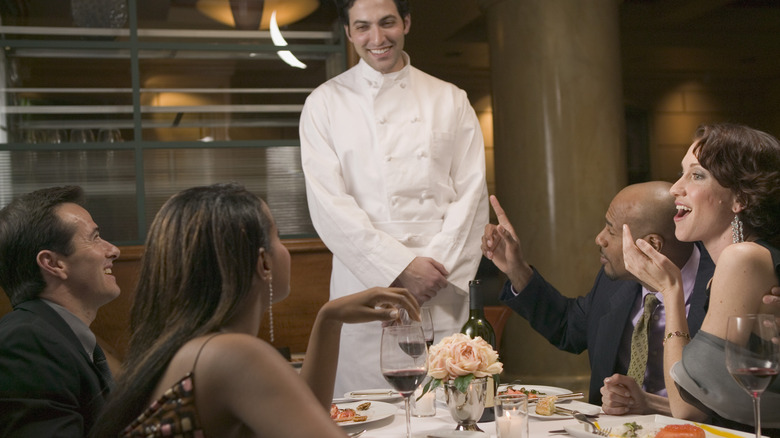Restaurant Menus Have Been Around For Ages
"Looks like meat's back on the menu, boys!" If you've ever seen "The Lord of the Rings" film trilogy, you might recall this famous quote from "The Two Towers" just before the Uruk-hai tucks into an all-you-can-eat orc feast. If you're like us you might have thought; "how the heck did the Uruk-hai know what a menu was?" "The Lord of the Rings" may be set in the fictional Middle Earth but it is loosely inspired by Europe in the middle ages, so our next thought was whether or not menus and restaurants existed that far back. And if so, how long have restaurants existed and when did menus first come into use?
Humans have been eating outside the home for thousands of years, but according to History.com, the earliest evidence of what we in the modern day would recognize as a restaurant dates back to 1100CE and the Song Dynasty in China. As trade developed between the Northern and Southern capitals Kaifeng and Hangzhou, restaurants sprung up for visiting traders who weren't used to the local fare and craved the taste of home.
Co-author of "Dining Out: A Global History of Restaurants," Elliott Shore, told History.com that the menus at these establishments were so varied they resembled a 21st-century restaurant: "You could go to a noodle shop, a dim sum restaurant, a huge place that was fantastically and opulently put together or a little chop suey joint."
Could menus be phased out?
Inns in the middle ages and thermopolias in antiquity predated restaurants in Europe. They did serve food and drink but what makes them different from a restaurant is that they didn't have an à la carte menu which customers could choose from; there was a set menu for the day, essentially whatever the innkeeper had to hand, and they also offered lodging for travelers.
Despite restaurant culture being prevalent in China so long before, modern restaurant culture didn't arrive in Europe for the first time until six centuries later in France in the late 18th century. Historian Rebecca Spang wrote in her book, "The Invention of the Restaurant: Paris and Gastronomic Culture," that popular bouillon restaurants copied the cafe service model, giving customers printed menus to choose from and quickly adding other items to the menu.
Therefore it's no accident that the French gave us the words "restaurant" and "menu." "Restaurant," from the verb "restaurer," means to literally "restore oneself" or "restore one's strength" and "menu," comes from the French "menu de repas" or "list of meals." Menus continue to change in modern times, with crafty restaurateurs using tricks to distract customers from prices, and the impact of Covid-19 and the ease in using QR codes leading restaurants to do away with menus as we know them, so as technology develops it's safe to assume the menu as we know it may continue to change with it.

